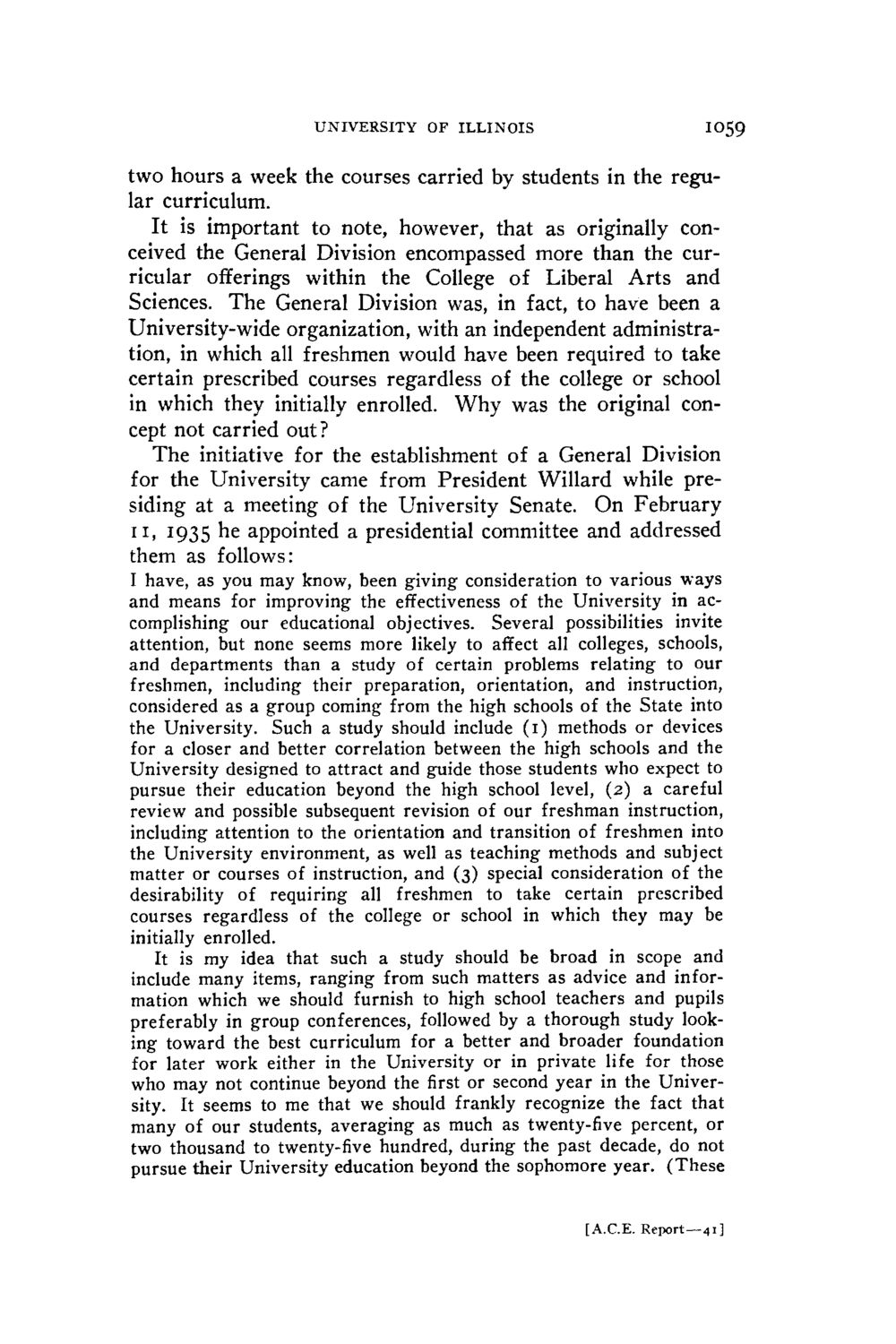| |
| |
Caption: Board of Trustees Minutes - 1944
This is a reduced-resolution page image for fast online browsing.

EXTRACTED TEXT FROM PAGE:
U N I V E R S I T Y OF I L L I N O I S I059 two hours a week the courses carried by students in the regular curriculum. It is important to note, however, that as originally conceived the General Division encompassed more than the curricular offerings within the College of Liberal Arts and Sciences. The General Division was, in fact, to have been a University-wide organization, with an independent administration, in which all freshmen would have been required to take certain prescribed courses regardless of the college or school in which they initially enrolled. Why was the original concept not carried out? The initiative for the establishment of a General Division for the University came from President Willard while presiding at a meeting of the University Senate. On February 11, 1935 he appointed a presidential committee and addressed them as follows: I have, as you may know, been giving consideration to various ways and means for improving the effectiveness of the University in accomplishing our educational objectives. Several possibilities invite attention, but none seems more likely to affect all colleges, schools, and departments than a study of certain problems relating to our freshmen, including their preparation, orientation, and instruction, considered as a group coming from the high schools of the State into the University. Such a study should include (1) methods or devices for a closer and better correlation between the high schools and the University designed to attract and guide those students who expect to pursue their education beyond the high school level, (2) a careful review and possible subsequent revision of our freshman instruction, including attention to the orientation and transition of freshmen into the University environment, as well as teaching methods and subject matter or courses of instruction, and (3) special consideration of the desirability of requiring all freshmen to take certain prescribed courses regardless of the college or school in which they may be initially enrolled. It is my idea that such a study should be broad in scope and include many items, ranging from such matters as advice and information which we should furnish to high school teachers and pupils preferably in group conferences, followed by a thorough study looking toward the best curriculum for a better and broader foundation for later work either in the University or in private life for those who may not continue beyond the first or second year in the University. It seems to me that we should frankly recognize the fact that many of our students, averaging as much as twenty-five percent, or two thousand to twenty-five hundred, during the past decade, do not pursue their University education beyond the sophomore year. (These [A.C.E. Report—41]
| |